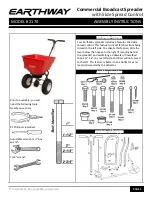
MNP85ENV00
Rev.02 (2014-01-07) Page 5 of 20
DIMENSIONS (in)
BT11 Model
Width
Depth
Height
With stacker 200
3.68 5.47 10.73
With stacker 375
3.68 5.65 10.73
With stacker 500
3.68 6.24 10.73
(See Figure 2 and Figure 3, 4 and 5 in appendix)
1.4 Electronic characteristics of the banknote reader
18 optical sensors exploring the complete light spectrum for more reliability.
Magnetic sensor to check additional security features in euro banknotes.
Standard MDB banknotes reader.
Validates banknotes in any of four possible positions.
Flash memory for easy program updating.
Banknote patterns can be re-programmed via a PC
Operating temperature range: -10 to +60 °C (14F-140F)
BT11 MDB Banknote reader:
Input voltage range: 20 ... 42 Vcc.
Maximum peak current 1.8 Amp.
Consumption with power supply to 32V: Waiting bills 110mA. Accepting bills
245mA.
It can store up to 48 different banknote face patterns.
Security level (high acceptance/high security) can be selected by user.
2. Banknote reader status LEDs
This reader has 14 status LEDs organised by pairs, 10 of them are blue and the other
4 are red. When one led is said to be on, it means a pair since the hardware of the
reader cannot turn a single led on, so there are 5 blue LEDS and 2 red. Every time left
or right is mentioned in this manual it will refer when the reader is with the bill entrance
up (and the stacker down).
When the reader is turned on it always follows the next sequence until it is ready to
accept banknotes.
The 5 blue LEDs are set on simultaneously and then off.
The 2 red LEDs are set on simultaneously and then off.
Once the reader is initialized, the blue LEDs follow one of the different cadences
established by Jofemar that can be selected by the dip switches
.
If only one blue LED is on, in the left end of the line, it means the reader is in
programming position.
The reader has 4 red LEDs in the middle of the cover that blink when there is a
problem with the reader. It stays blinking until the problem is solved.
Number of blinks
Meaning
Permanently on
No communication
1
All banknotes inhibited by the machine
2 Banknote
jammed
3 Sensor
error
4
Stacker full or jammed
5
Stacker not detected
6
Main motor failure
7 Storage
memory
error
8
Sensors setup error






































